

Newsela. Curriculet. Actively Learn. MPT Annotator Tool. "Then Goody Cloyse knows her old friend?
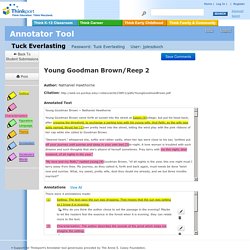
" observed the traveller, confronting her and leaning on his writhing stick. "Ah, forsooth, and is it your worship indeed? " cried the good dame. "Yea, truly is it, and in the very image of my old gossip, Goodman Brown, the grandfather of the silly fellow that now is. But--would your worship believe it? "Mingled with fine wheat and the fat of a new-born babe," said the shape of old Goodman Brown. "Ah, your worship knows the recipe," cried the old lady, cackling aloud.
"That can hardly be," answered her friend. So saying, he threw it down at her feet, where, perhaps, it assumed life, being one of the rods which its owner had formerly lent to the Egyptian magi. "That old woman taught me my catechism," said the young man; and there was a world of meaning in this simple comment. Annotation Studio. 6 Great Social Reading Tools. Social reading supports many of the skills that the new literacies embody: communication, collaboration, critical thinking and online reading comprehension (among others).
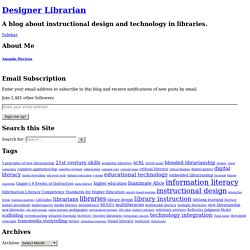
There are a growing number of social reading tools out there, and every librarian could use a few of those tools in his or her technology belt. Here are 6 of my favorites: Biblionasium Biblionasium is a social reading tool built for kids. It was named a 2013 AASL Best WebSite for Teaching and Learning. This one is so good that I recommended it to my daughter’s fifth grade teacher. Booklikes Booklikes is a social reading tool in blog-like format. eMargin eMargin is a collaborative annotation tool. Genius Web Annotator. Genius lets you add line-by-line annotations to any page on the Internet Annotate every web page You can install our Chrome extension, so Genius is with you everywhere you go.
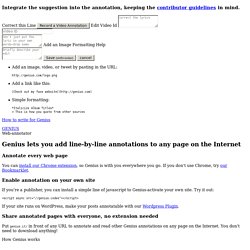
If you don’t use Chrome, try our Bookmarklet. Enable annotation on your own site If you’re a publisher, you can install a simple line of javascript to Genius-activate your own site. If your site runs on WordPress, make your posts annotatable with our Wordpress Plugin. Share annotated pages with everyone, no extension needed Put genius.it/ in front of any URL to annotate and read other Genius annotations on any page on the Internet. Bringing the dreams of the original Internet into the future… Only a handful of people know that the web browser’s big missing feature—the feature that was supposed to be in from the start but didn’t make it—is the ability to annotate any page on the Internet.
Check out News Genius the flagship project of the Genius Web Annotator Frequently Asked Questions. eMargin. Text § Annotations at Harvard. The earliest text annotations, also know as marginalia or scholia, were usually anonymous and date back to the 4th or 5th century BC.

These were hand-written reminder notes, grammatical, critical or explanatory comments inserted into the margins of ancient manuscripts. Some manuscripts were so heavily annotated that there was no room for additional notes within the margins or between the lines of the original text. This meant that scholiasts, or commentators, had to devise a new annotation system, relying on intricate symbols, interspersed throughout the document, that referred to separate volumes containing only commentaries. Requirements of a Text Annotation System. 5 Strategies for Teaching Close Reading with Tech. When we think of close reading, we imagine students wrangling a set of colored highlighters, books stuffed with sticky notes, and text margins filled with hand-scrawled observations and questions.
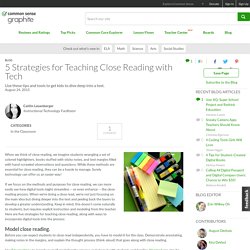
While these methods are essential for close reading, they can be a hassle to manage. Surely technology can offer us an easier way! If we focus on the methods and purposes for close reading, we can more easily see how digital tools might streamline -- or even enhance -- the close reading process. When we’re doing a close read, we're not just focusing on the main idea but diving deeper into the text and peeling back the layers to develop a greater understanding.
Keep in mind, this doesn’t come naturally to students, but requires explicit instruction and modeling from the teacher. Model close reading. Before you can expect students to close read independently, you have to model it for the class. Supporting Students in Close Reading. “What do you mean, how do we support literacy?” By Joanna Gerakios Last year my supervisor challenged me to provide a framework for how our district school librarians support literacy.
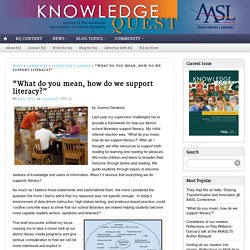
My initial internal reaction was, “What do you mean, how do we support literacy?” After all, I thought, we offer resources to support both reading for learning and reading for pleasure. We invite children and teens to broaden their horizons through books and reading. We guide students through inquiry to become seekers of knowledge and users of information. As much as I believe those statements and stand behind them, the more I pondered the question the more I had to admit that my response was not specific enough. This brief encounter shifted my focus, causing me to take a closer look at our district library media programs and give serious consideration to how we can be more intentional and explicit in supporting literacy. Digital Annotation Screencasting Idea.